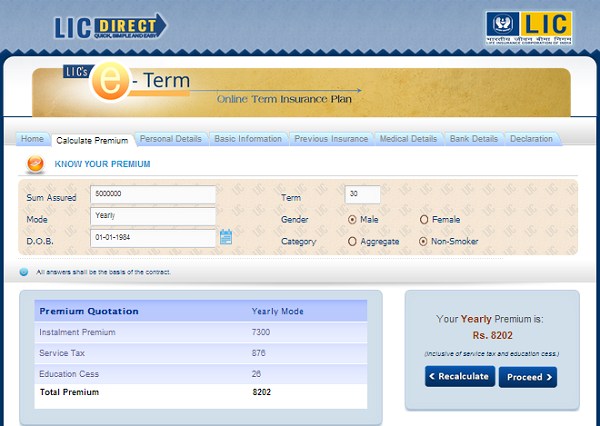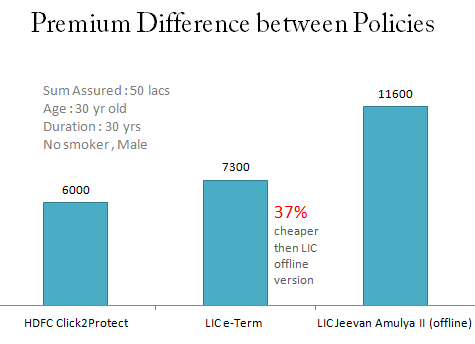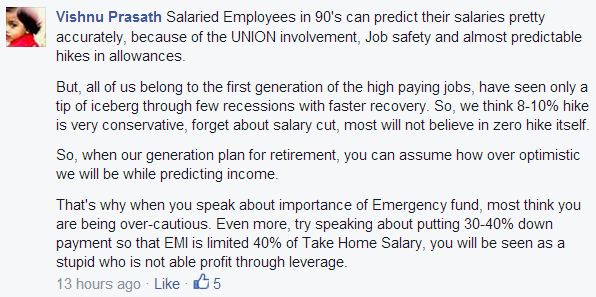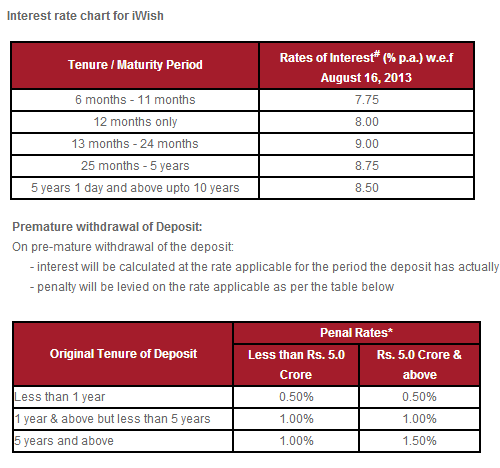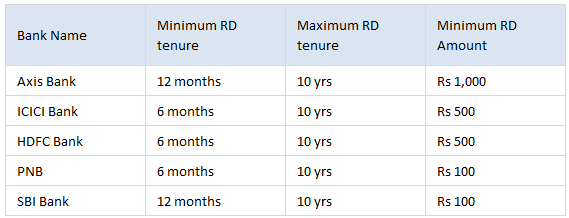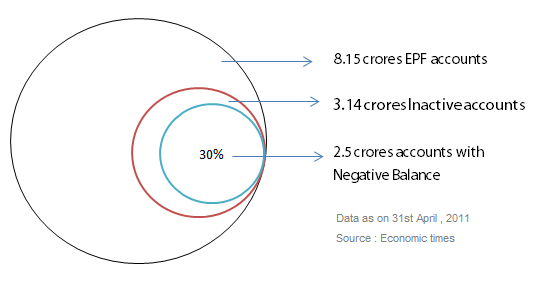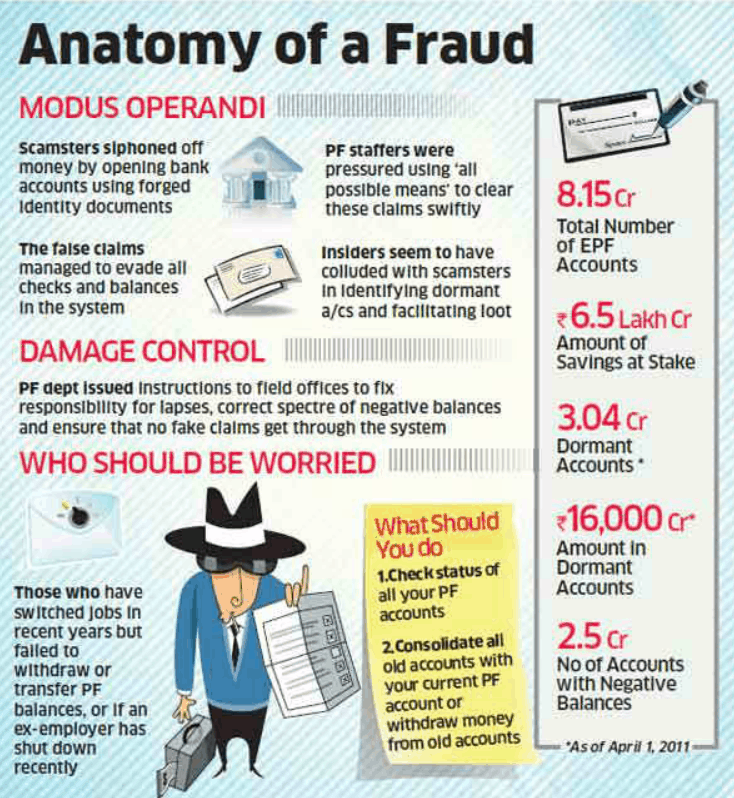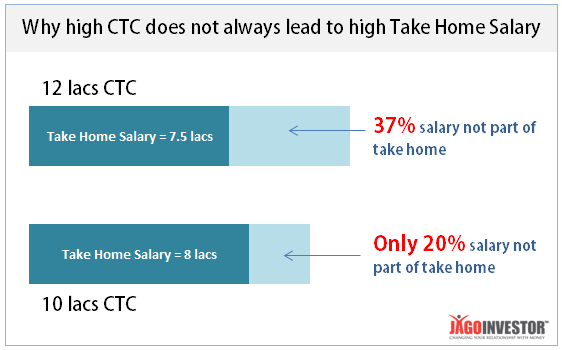Today I am sharing my real life story of how I arranged my financial life. Our financial lives over time gets messed up because we are lost in our jobs and family and everyday some new information or financial document enter our life and gets piled up. We keep stuffing documents here and there in our almira thinking – “I will keep it properly next Sunday” .
Which never comes !

In my personal case, I consciously try to keep things arranged as far as possible, but just like everyone, my financial documents and various information become unorganised like every other person. So finally one day, I decided to have my own “Personal Finance Management Week” , where I decided to finally come out of my “comfort zone” and cross all my mental limits, defeat my laziness and arrange all my documents and fix various other “issues” and finally make things neat and clean in my financial life. And thats exactly what 150+ participants of our last bootcamps did in their financial life too.
But why Did I decide to arrange my financial life ?
- For Myself – Everytime I have to find out some document or information, I really had to struggle remembering where exactly I had kept it, The piles of xerox papers, insurance papers, bank documents, property papers etc etc had got mixed with each other and it takes more than 10-15 mins, lots of frustration and that little guilt inside for creating this mess and not keeping it clean . I wanted to have a clean space of things, where if you ask me about document X or information Y – I can give it you in less than 60 second.
- For my Family – Because I know, my family will really get confused and frustrated when they will have to deal with my financial mess. They are not as much financially aware as I am, they dont understand this “personal finance” area so much and it will scare them like anything in future when they need to deal with it. So I need to create an environment, where my family members can find out various things related to my financial life, as easily as possible. If you want a proof that family members can suffer if you dont take care of this area, then I want to share a real life case which was shared on our blog itself where, a wife was never able to claim life insurance after her husband’s death, because she had no idea where are documents and which company was it .. here is the sharing by Nisha
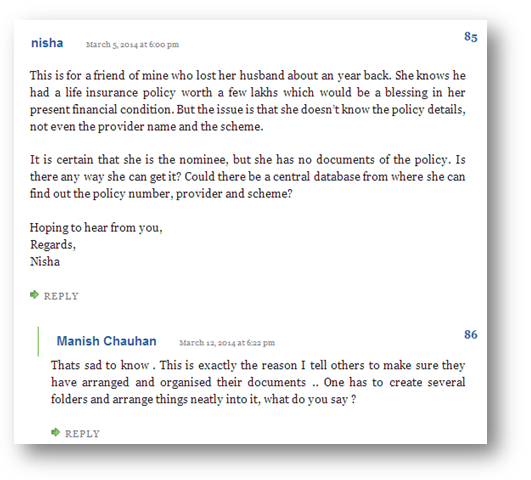
- and Finally, because its once a year task – Truly speaking, this whole thing does not take a lot of time, all it takes is huge commitment and a small START. There is a great chance that even you have not completed this, just out of lethargy and nothing else, It takes few hours of dedicated work and huge commitment and nothing else. Once you arrange all the things, then from next year, it will be just 1 hour of additional work to update things.
4 things I did for arranging my financial life like a SuperMan
So, here is how I started. The first thing I did was to buy 3 BIG folders and 2 small plastic pockets which can contain few documents and then I did following 4 tasks
Action #1 – Created 5 folders to hold documents and categorise them
The first big thing I did was to buy 5 folders where I arranged 5 kind of documents in each, so that if I need a particular kind of document or information, I have a separate folder for that. Those 5 folders were

a) Protection Related Folder – This folder contains all my documents which protect my financial life like – Life Insurance, Health Insurance, Car Insurance related papers, which includes Policy documents, Health Cards, Premium Receipts, A paper containing all the customer care numbers. I still need to add a document which explains them what to do to claim each of them. Imagine you meet an accident and are not accessible, this folder will help them like GOD , Won’t it ?
b) Property related Folder – This folder contains all my property related documents, like Loan Agreement Paper, Home Loan related document, Property Tax receipts and any other small or big document which is property related
c) Banking Related Folder – Banking is a big aspect of everyone’s financial life and I thought why not have a dedicated folder for this. So in this folder I have all my cheque books, Bank related document, Locker papers, FD receipts (if any) , any bank statements which I want to keep etc etc. If you have more than 2-3 bank accounts, it really becomes very cumbersome to manage them, so this dedicated folder comes very handy.
d) All the Bills/Receipts/Warranty Cards Folder – This is not exactly related to personal finance, but over the years, you collect so many important bills, warranty cards, receipts which you want to keep because they are needed later in future and if you cant find them, you really regret mismanaging them and not keep them properly. So in this folder I am now keeping all the bills and important warranty cards. You can also store all your old ITR acknowledgement copies in this folder.
e) Education Related and Important Documents – And finally I have dedicated a folder for all my and spouse education related document like 10th , 12th , graduation and post graduation certificates , marksheets , passing certificates etc etc. Plus , I have also chosen this same document to keep our important documents like Passport, Aadhar card, Driving License xerox, Voter Id Card etc etc, Cable related, Electricity bills etc etc.
After making these 5 folders , now if you ask me you want X , I open my almira, know which folder has it, open it and can find out the required document 80% faster compared to old situation. Now my family, knows that things are not randomly lying here and there, but somewhere neatly arranged .
How 150+ investors organised their financial documents in Bootcamp
We have just completed our Facebook Bootcamp with 150+ investors and we dedicate one full week for arrangement and cleaning up of your overall financial life. Almost all the 150+ participants had taken huge actions and with lots of commitment, they all cleaned up their financial lives. They all arranged their documents and you should see what kind of conversations happens on our facebook bootcamp. See the snapshot below

Action #2 – Created Scanned Version of all important Documents
The next important thing I did was to scan each of my very important document and keep the scanned version online accessible to me and my family. Some people might think its going extra mile and not required, but then its your choice and mindset. God Forbid, if you loose your physical documents somewhere, due to fire, robbery or any damn reason, it gets really tough sometime, especially in case of education related certificates.
There is no harm in scanning documents and keeping it with you online, especially if it takes 2-3 hours of work. All you need to do is take out time and pick which documents you want to scan and then finally scan then. Make a folder, compress it in ZIP format and mail it to yourself on your email id and someone else in your family. Keep it saved in a CD format also and keep at home or locker. It does not hurt at all, other than it takes fews hours of yours, but so what, its for your own good, Its a once and for all kind of activity.
I would still make sure I will take care of my physical documents , but god forbid if something happens to them (for any damn reason), atleast I have a scanned version of it, Its a better situation then to have nothing in your hand. In my case, I have scanner at my home so it was handy for me.
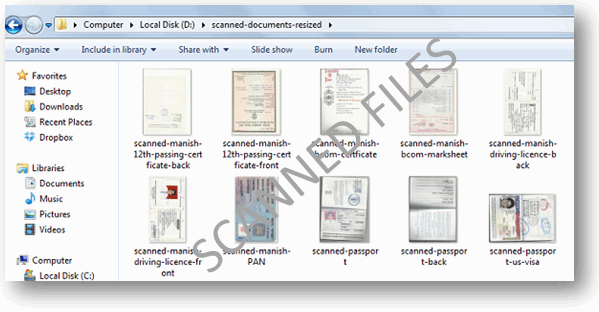
Here are those documents which I scanned
- Health Insurance Policy First Page (which mentions Sum Assured and Premium)
- Life Insurance Policy first Page
- Health Insurance Cards
- 10th , 12th and other educational certificates marksheets
Action #3 – Created Emergency Black box Kit for my Family
The next thing I did was to create a emergency black box kit, which any one from my family can open and they will get every possible information about everything at one place. It will have all the basic + critical directions for them to follow, whom to contact in which case, where to go in which situation, how to claim for various things etc etc. Here is a snapshot of what all it can contain
- All Important Contact Numbers like CA, Tax Consultant etc etc
- Toll Free Phone numbers of Health Insurance, Car Insurance, Life Insurance
- Customer Care numbers of all the banks where we have account
- Email id of all the Insurance and Investment companies
- All Documents numbers like – PAN number, Driving Licence Number, Passport Number
- Process to claim life insurance, health insurance etc
- Process to close bank accounts and claim back the money
- Process to claim back all the mutual funds and other investments
Here is a rough idea on how it can look like
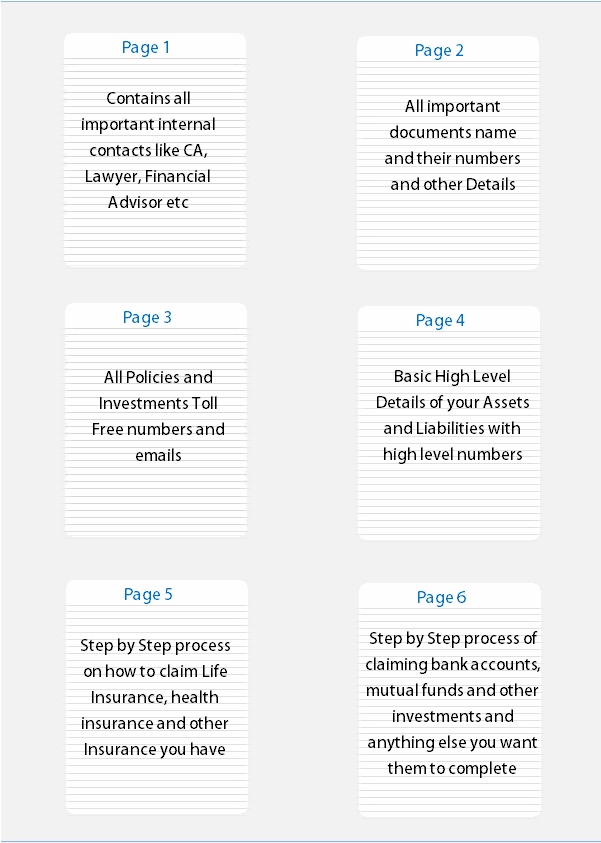
It can be roughly 6-8 pages long. You can keep the online version on your computer, email and dropbox and also take a printout and keep it at home and label it respectively like – “Open in case of emergency” . So incase something bad happens and you are not accessible or can’t help your family, your family members can look at it and their life will be more easier !
Store some important Contacts on Phone also
I extended this task and also stored some very important things on phone , which can be very handy and save you a lot of time in the times of crisis. I have my health insurance card scanned version on my phone, so that I can use it whenever required. Also I stored all the customer care numbers properly one by one with this format – “COMPANY-NAME CUST CARE” , so that in future if me or my family members have to call some customer care, we just can look at the phone search for “CUST CARE” and then choose the number.
I have seen people who try to find out the important phone numbers on the last minute, and that eats out some important time of theirs. Also in case of crisis or emergency – you really need it handy on your finger tips, This particular action might look very trivial , but in times of need, you will really feel very relaxed and happy to have it with you. More than yourself, its for your loved one’s who don’t have to struggle for this.
Action #4 – Created a Run-Away File
I dont know if this is my invention – but this came into my mind some weeks back . Every time I had to go for some important work which requires my Identity card xerox or address proof, I had to everytime arrange for it because I didnt had the xerox ready with me, so I had to carry original and then on the way, I have to xerox it. This takes up time …
Then at times, I had to return back home because I was not having my cheque book, because it was not asked to me . Then at one time, my trip to a property tax department was a waste because I didn’t bring my Index2 (house ownership proof) .. So then I thought why not create a RUN-AWAY file , which has all the things you can imagine which might be required ! for some work . So if you have to take a new phone connection, just pick the run-away file and go
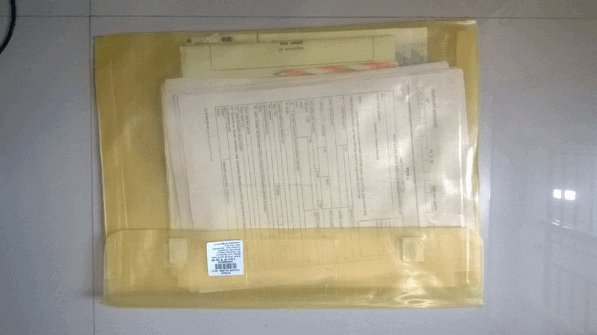
If you have to go to book a new property – Phew .. Just pick the run-away file and thats all .. It will have all the things ..
So it will have
- Atleast 2 Xerox copies of PAN CARD
- Atleast 2 xerox copies of your address proof (electricity/phone bill)
- Passport xerox, aadhar xerox, driving licence
- 4-5 passport size photos of yours, spouse ete (if needed somewhere)
- 1 cheque leaf of your bank accounts (unsigned)
- 1 pen
You place all these things in a plastic packet and that’s all, you take it where ever you go , You don’t have to arrange for things every time. From the day I have created it, my life has become very easy, all I need to do is just open my almira and pick up that folder and I move on ..
Define your own style of arrangement
What you just saw above was my personal way of arranging things. This is just a idea of what all you can do, next – you need to define what all you want to arrange, in what manner, to which level and which are more important things for you and what is not. It might happen that you might feel, that what I did was little over-doing of things, but thats fine – its your choice. You can choose to go for a lower version, but I would just say that a lot of things are just one time task and then a small pinch of yearly review, Give the benefit you will get out of it, compared to the time you put, its worth going a little deeper.
Arranging Things is 1st Step , Communicating with Family is 2nd
We feel we should communicate all the things about our financial life to our spouse, children , parents etc and they should be aware about what all is there, but imagine if you do that without arranging things . If things are messed up in your financial life, the communication from do will not be effective.
However, if you arrange things neatly like this, and then when you show these things to your family members – they will be able to consume it in a better way, they will understand things more clearly, because they are able to “see” things before their eyes. They know what to find, where to find, and how to find. If things are clean and neatly arranged like this, they will also become more serious about overall finances and they will really feel that you are responsible and think about their care in future.
You will feel amazing
Once you arrange your financial life and fix lot of other things which were pending from long time, you will really feel amazing. I want to share one of our bootcamp member experience of working on his financial life and how our bootcamp has changed his financial life overall.
This looks so small thing, but the difference it makes in your day to day life is really great ! – So are you still waiting for “next Sunday” ?
